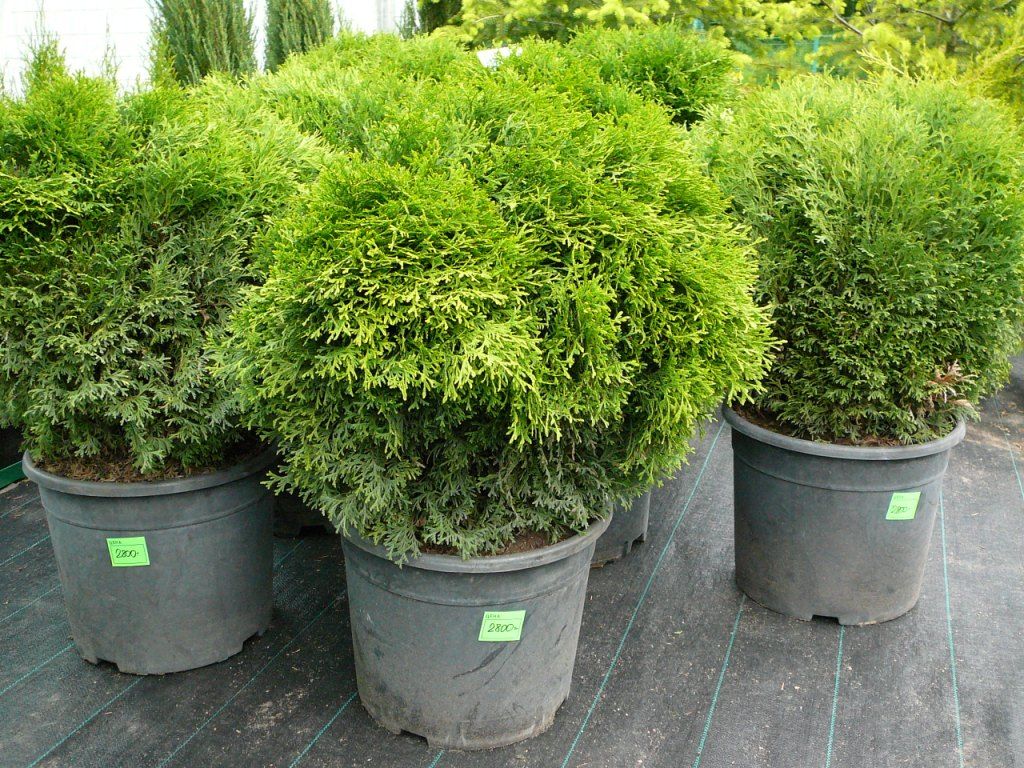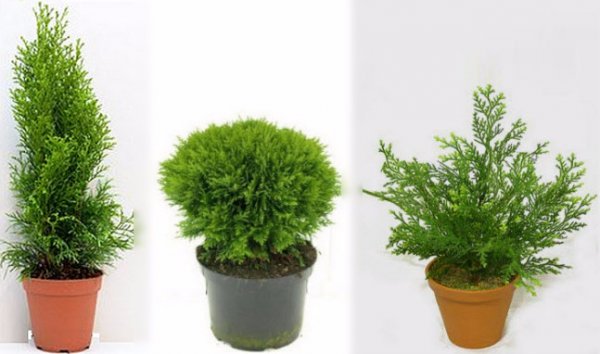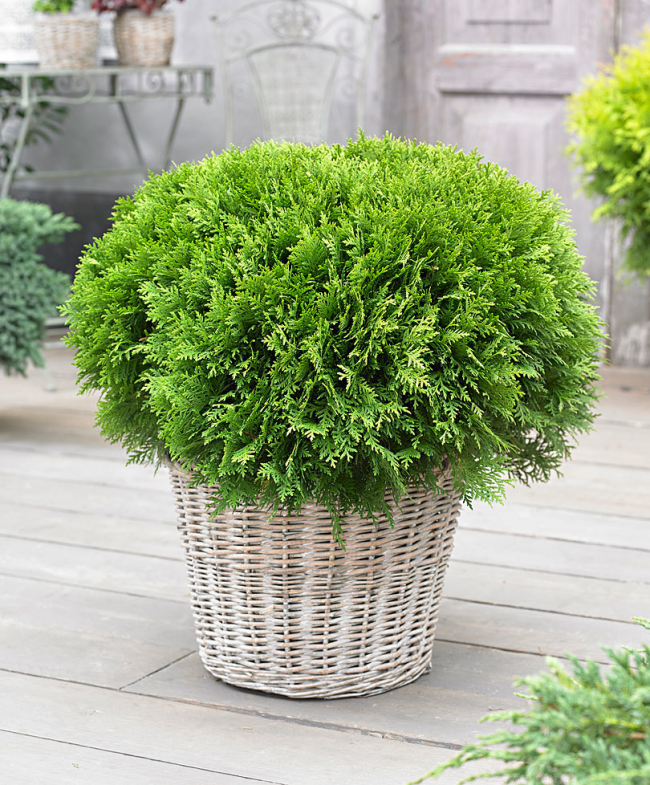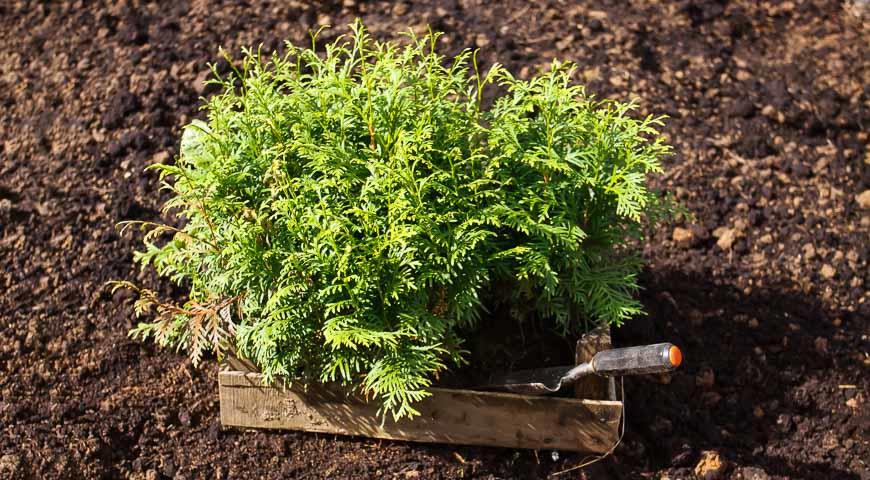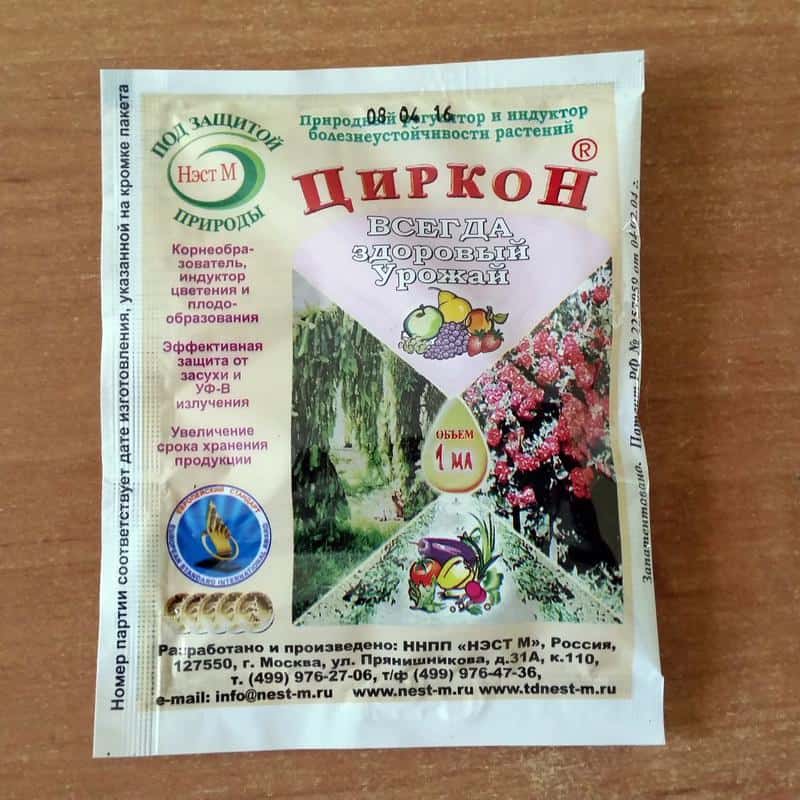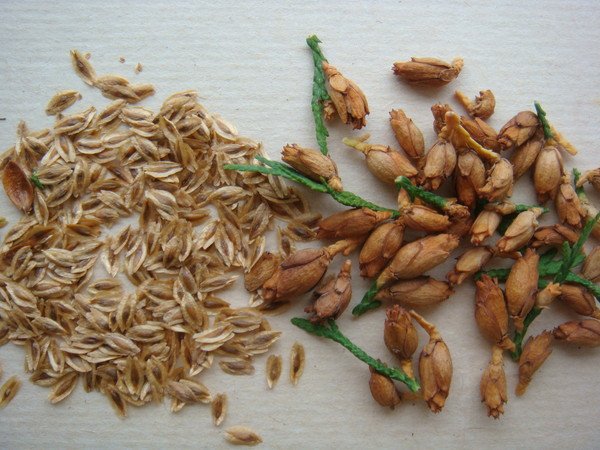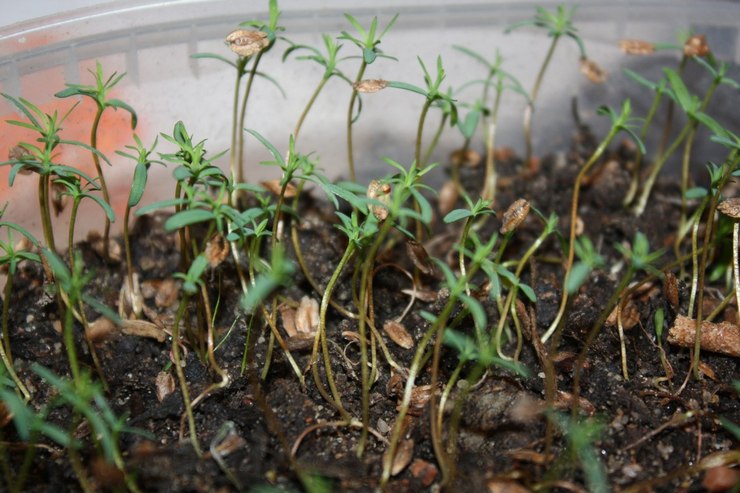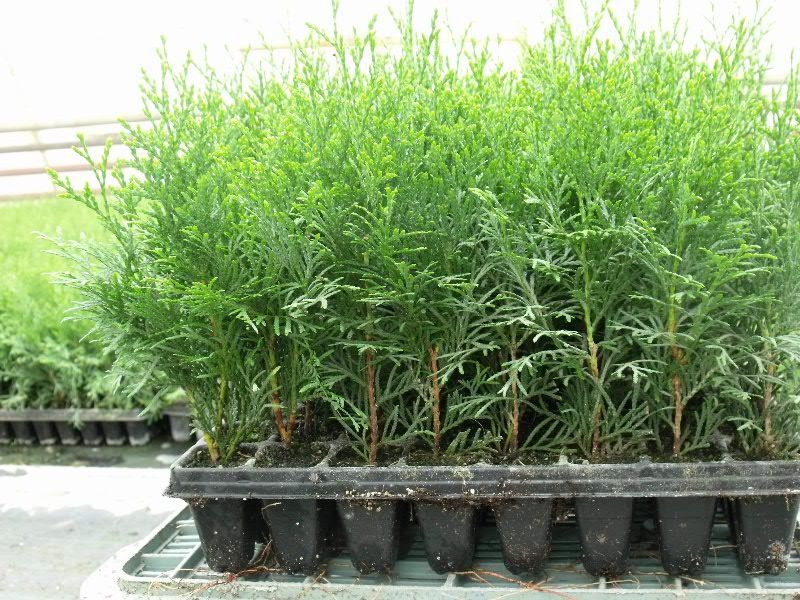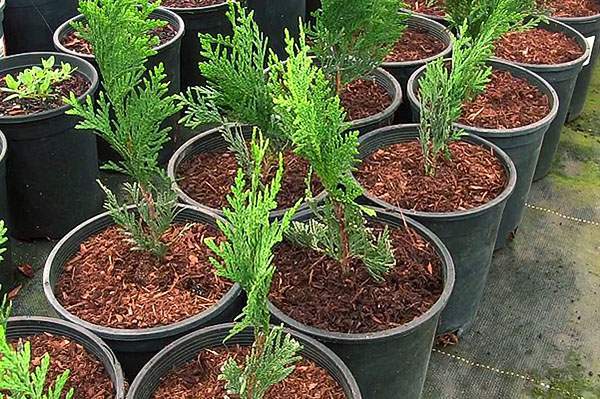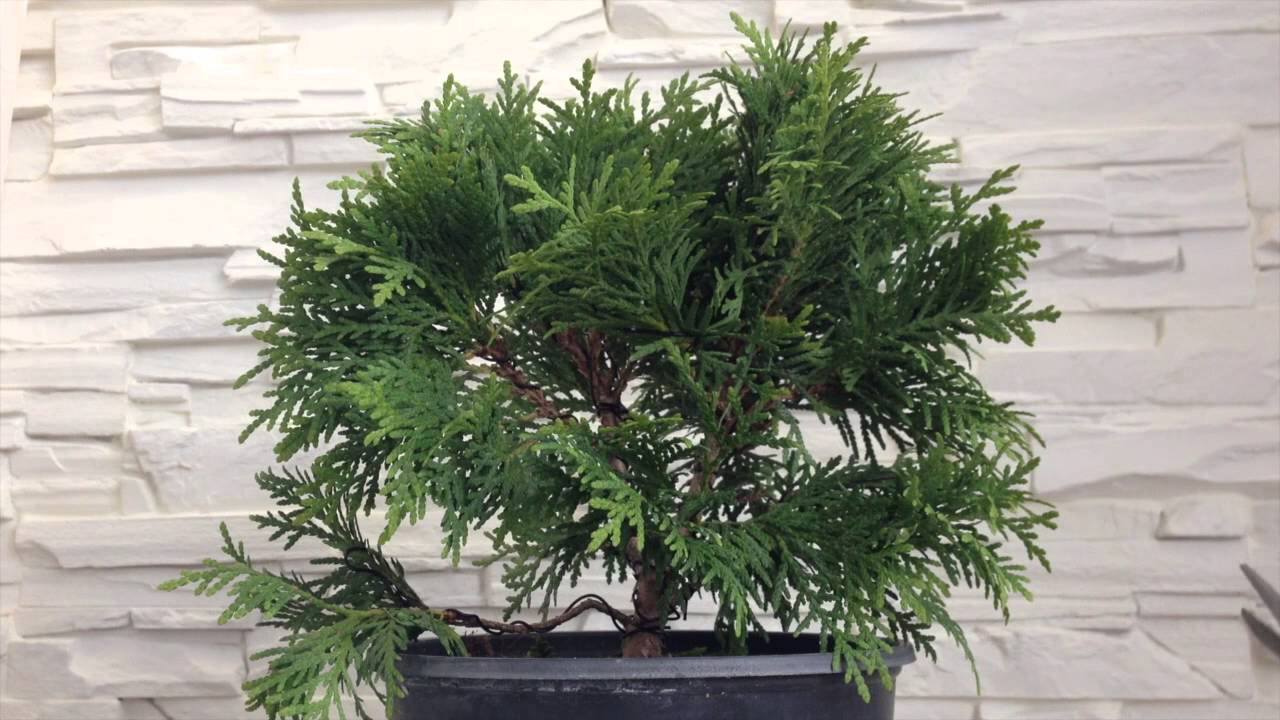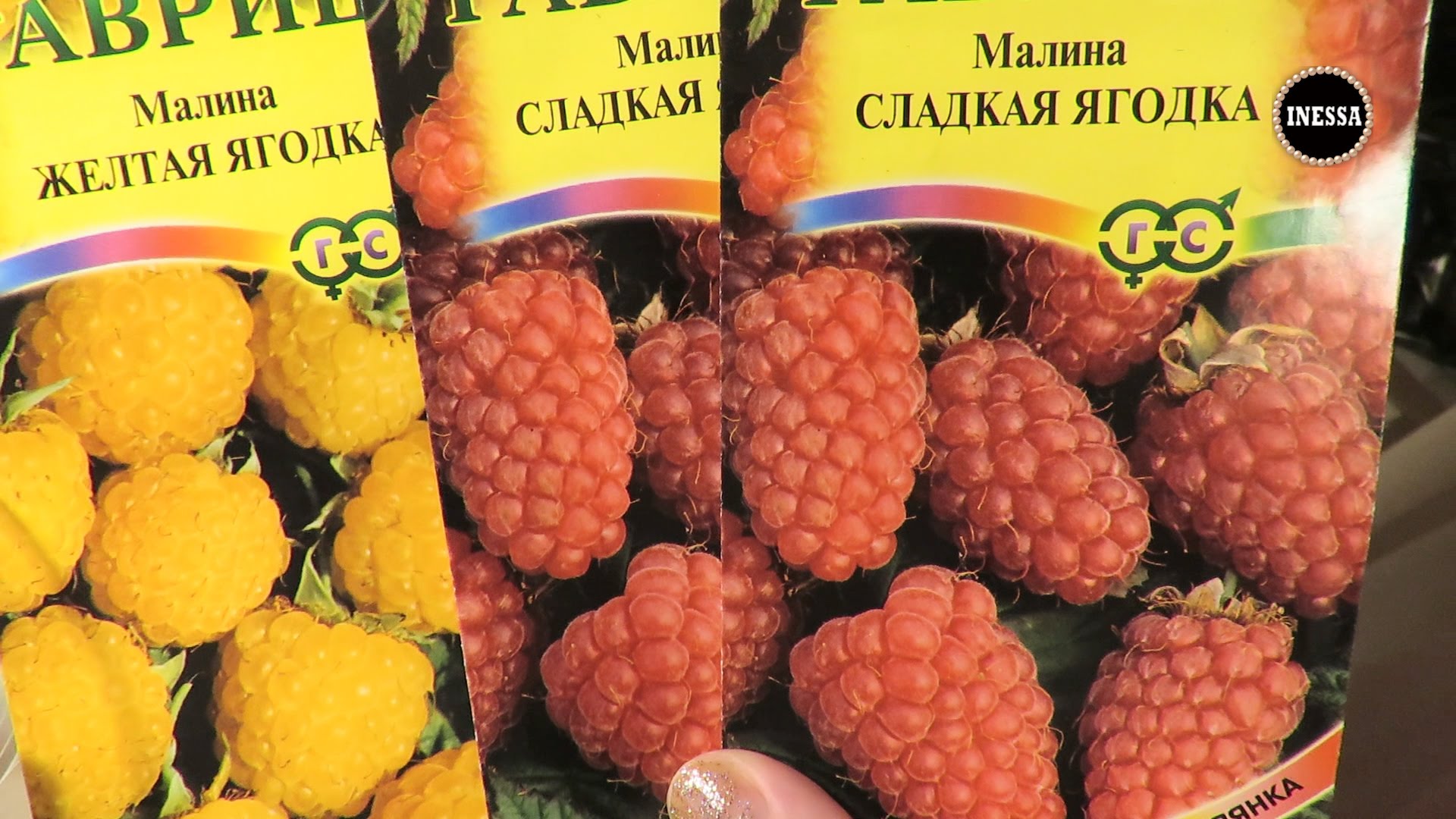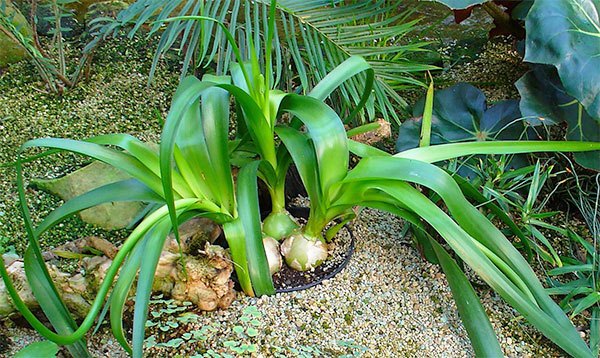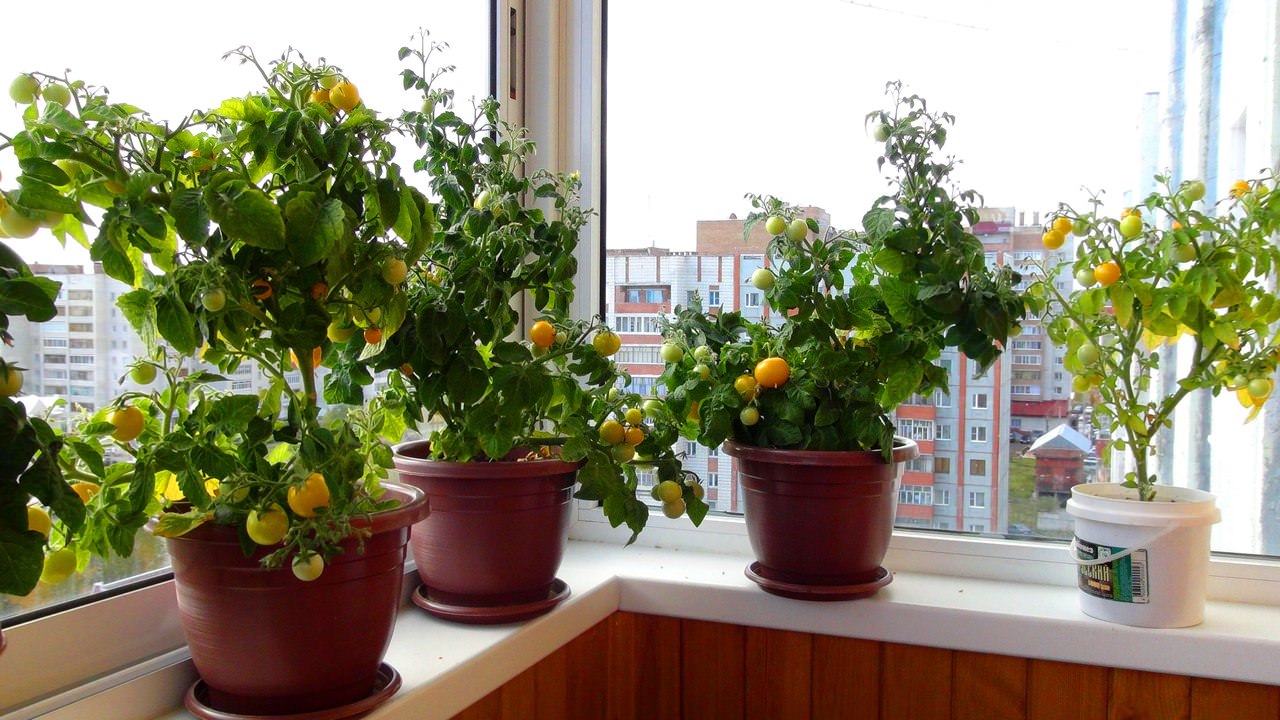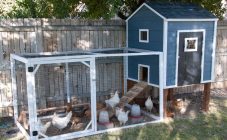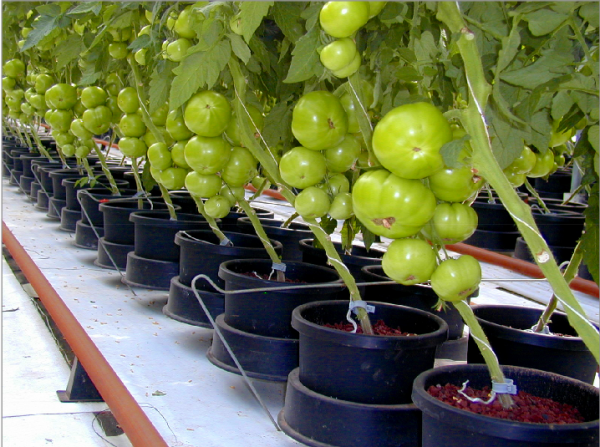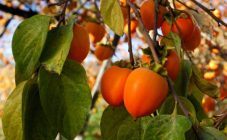Content:
This plant is widely used for landscaping. However, it can also be grown at home. In particular, thuja is used for growing bonsai. This article will tell you about how thuja can be grown in a pot at home.
Description of culture
Thuja belongs to the Cypress family. It has another name - iron tree. This evergreen grows wild in North America and Japan. There are more than a hundred of its decorative forms.
Thuja needles are small, diamond-shaped, flat-shaped branches. Cones are elongated in shape, hanging down on the branches. Young shoots are green in color. As they grow, they gradually begin to turn yellow and take on a woody color.
In the place where the flower buds were, cones are formed after pollination. They are small in size - they do not exceed 1 cm.
The leaves of this plant contain camphor oil, which gives the plant a pleasant smell.
She has several of the most common types:
- Western thuja, also called the Tree of Life;
- Sichuan, it is also called Chinese;
- Korean thuja;
- Thuja Standish or Japanese;
- Folded or Giant thuja;
- Eastern thuja.
To grow thuja in an apartment, the last of the listed varieties is usually used. On the basis of this variety, several dwarf plant forms have been created. One of the differences between them is that they have different leaf colors. There are green, silver, blue or gold colors. Also, varieties were bred, the color of which is mixed.
There is such a sign that this plant is able to drive away evil spirits from the house where it is located. In addition, some superstitions are associated with thuja.
Homemade thuja, which is grown in pots, usually belongs to one of the following varieties:
- Western Teddy;
- Danica;
- Miriam;
- Western Golden Globe;
- Teenie Tim;
- Folded Vipcord;
- Little Giant;
- Folded Cagers Beauty;
- Dwarf;
- Eastern Aurea Ana;
- Western Mickey.
Plant care
For growing thuja at home, the soil must be well loosened. This is necessary in order for it to pass air and moisture well to the roots of the plant.
Cultivation land can be purchased at a specialty store. It is recommended to use a composition that is intended for conifers.
You can prepare the soil for the thuja yourself. For this, it is recommended to use 4 parts of coniferous land, 8 parts of deciduous and 1 part of sand. Stir them thoroughly before use.
For the care and cultivation of thuja in an apartment, it is important to choose a pot of the appropriate size. If it is small, a pot with a volume of 20 to 30 liters is usually used. If we are talking about a larger specimen, then we must proceed from the fact that a lump of roots and earth in volume should make up a third of the pot.
Before planting thuja at home, a drainage layer is laid on the bottom of the flower pot. Its task is to make sure that moisture does not stagnate in the bottom of the pot. This will protect the roots from possible rotting. One way to form a drainage layer is to use foam pieces or cut plugs.It is allowed to use gravel for this purpose, but it must be borne in mind that as a result, the weight of the pot will increase.
The plant pot needs to be watered frequently. Place it in a bright place, but not in direct sunlight. If there is not enough light, the crown can grow thinner.
Over time, to care for thuja at home, you will need a soil that has a different composition. To prepare it, you need 3 parts of peat, to which add 1 part of leafy earth and 1 part of sand.
The ground level in the pot should be at the level of the leaf collar. If it is higher, it can lead to rotting of the plant.
In the summer, it is important to water the thuja regularly - take care of it. It is important to ensure that the plant is not exposed to direct sunlight. Thuya does not tolerate the presence of a draft.
In winter, when leaving, the maintenance of the required temperature conditions comes to the fore. It is recommended to observe temperatures from 5 to 15 degrees during winter. Such conditions can be achieved, for example, by placing the plant on the balcony. Keeping it in a warm and low humidity environment can cause the plant to dry out.
Watering should be done less frequently in winter than in summer. In this case, one must be guided by the fact that the potted earth cannot dry out. It must be remembered that excess moisture can be harmful: provoke rotting of the roots.
Top dressing is carried out during the autumn-summer period. To do this for the benefit of the plant is necessary on a monthly basis. Fertilizer must be diluted well due to the fact that otherwise thuja will begin to grow rapidly, and for home cultivation this is usually undesirable.
This plant tolerates crown pruning well. This allows you to give it the desired shape, which will harmonize well with the environment.
Plant propagation
Reproduction of this plant can be done in various ways:
- seeds;
- cuttings;
- layering;
- branches.
The most viable plants are obtained using seeds. However, the procedure for growing seedlings takes six years. Only after they have expired, you can start growing the plant.
There is another important point here. When thuja is grown from seed, the properties of the mother plant are not transferred.
Seed use
If you decide to grow thuja from seeds, then it is important to provide them with suitable storage conditions. If they stay warm for a long time, they will most likely lose their germination. Therefore, it will be more preferable if you start preparing for growing, taking fresh seeds for this.
First, it is recommended to get the seeds out of the cones. To do this, you must separate them. Then it is necessary to sift through a coarse sieve. To preserve the seeds during the winter, you need to place them in moist sand and store them for several months in the refrigerator or in the cellar.
In regions where snow persists, it is a good idea to place it in the snow to a depth of 30 cm and leave it there for several months.
As soon as the seeds begin to germinate, they are placed in sand, provided with a high temperature and covered with a film.
It is allowed to germinate in a different way, if the climate and weather provide such an opportunity. The seeds can be germinated in the garden bed. Previously, it is necessary to loosen the earth there and add a little sand to it. It is also necessary to put up a small greenhouse for them.
Growing from cuttings
To do this, you first need to prepare the cuttings. It is better for this purpose to take branches from the middle part of the plant trunk.They don't have to be old and dry. It is also not recommended to take completely green ones.
It is recommended not to cut them off, but to tear them off with a sharp downward movement. In this case, together with a twig, a heel will remain at the end of the cutting. Its presence will help the plant to undergo rooting.
Before planting them, you need to remove the lower leaves. The fact is that if, during planting, they remain and touch the surface, then the stalk may rot.
They are planted in a specially prepared mixture of sand and peat, taken in equal parts. Before that, it is recommended to keep the cuttings in a solution of Kornevin or another growth stimulator for 12 hours.
When planting, the plant is placed at an angle of 60 degrees. A hole is made for him, 2 cm deep, then it is covered with fingers and slightly compacted.
In order for the rooting procedure to take place correctly, it is necessary to provide an appropriate microclimate. In this case, the recommended humidity is 70%, the temperature should be approximately equal to 23 degrees.
Plants are watered by spraying. This should be done daily. In this case, it is necessary to control the presence of mold. When the cuttings begin to sprout, the film covering them can be removed.
Growing by branches
It is produced in the same way as with cuttings. However, they are usually planted in sand, which is previously recommended to be disinfected with a weak solution of potassium permanganate.
Growing by layering
In this case, one more pot is required at home. In this case, you need to tilt a suitable section of the branch and sprinkle it with earth, having previously cleaned the leaves from this place. Then you will need to water it regularly. It can be pinned to anchor it in the ground. As soon as the cuttings begin to germinate, they must be separated from the mother plant.
Diseases and pests
This plant has few diseases. Basically, we are talking about the occurrence of fungal diseases. One of them, which is quite common, is brown mold.
Thuja bonsai
When bonsai is grown, it is necessary to constantly work to give the plants the right shape.
For this, the following methods are used:
- Bend the branches, and sometimes this is done on the verge of breaking. In this case, it is necessary to fix them in order to consolidate the change made.
- Nipping of new shoots is performed in the right places.
With skillful processing, a beautiful thuja bonsai tree will grow from the plant.
Thuja is well suited for growing at home, while not requiring additional effort for care.
